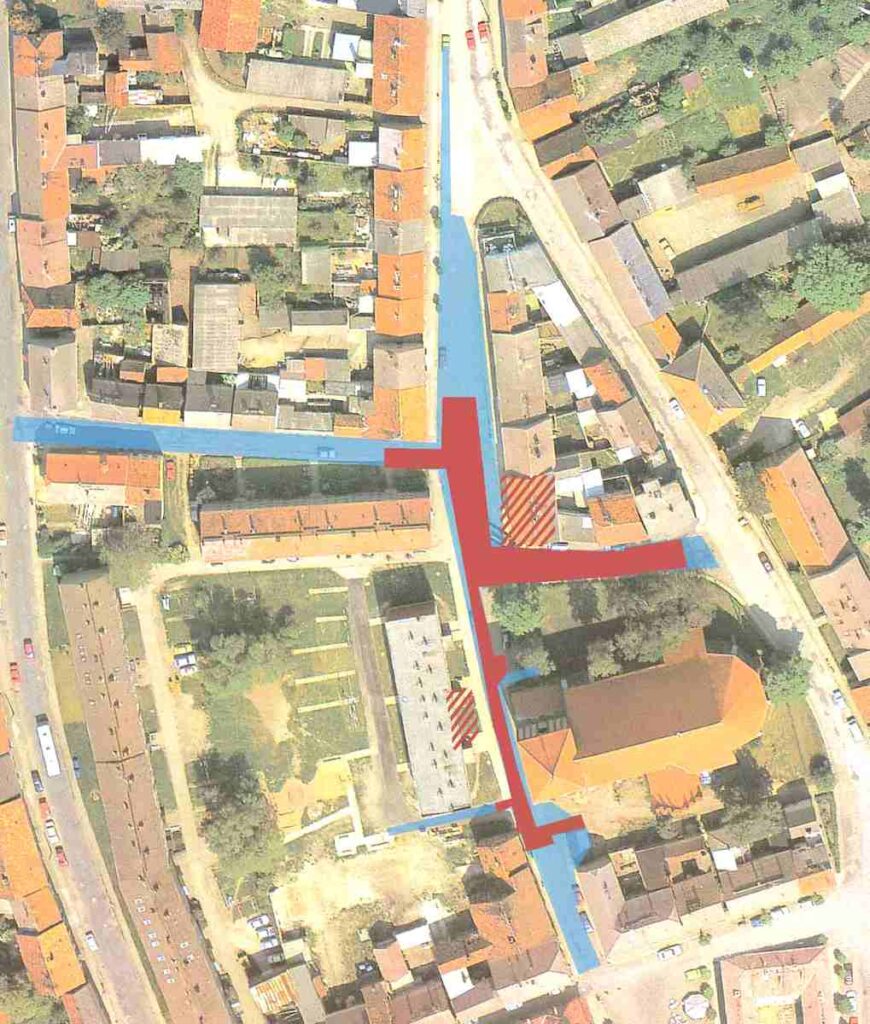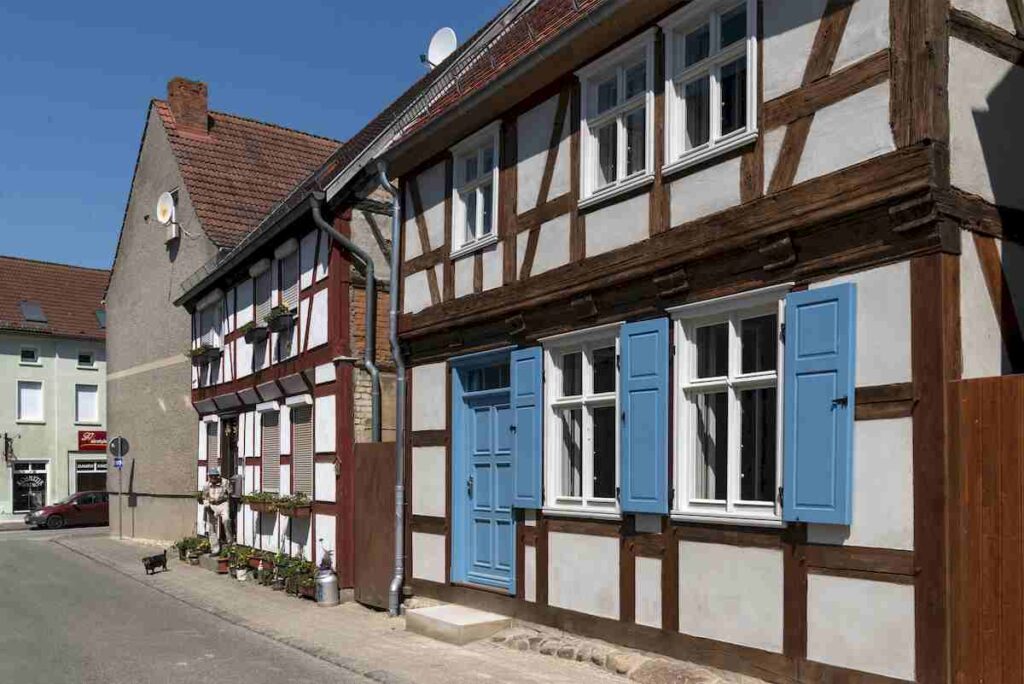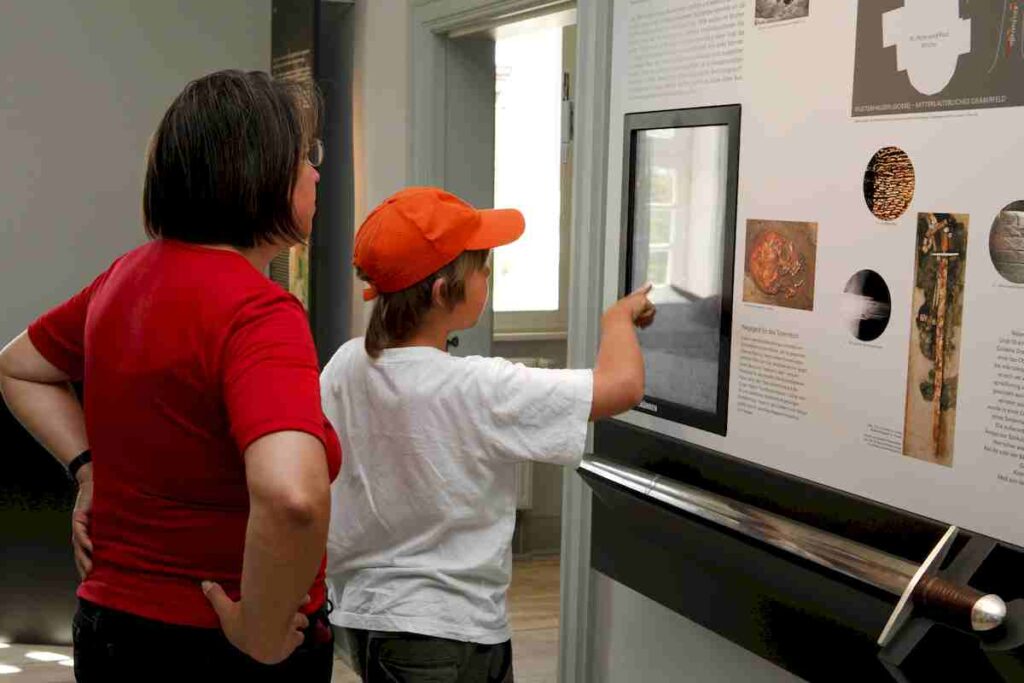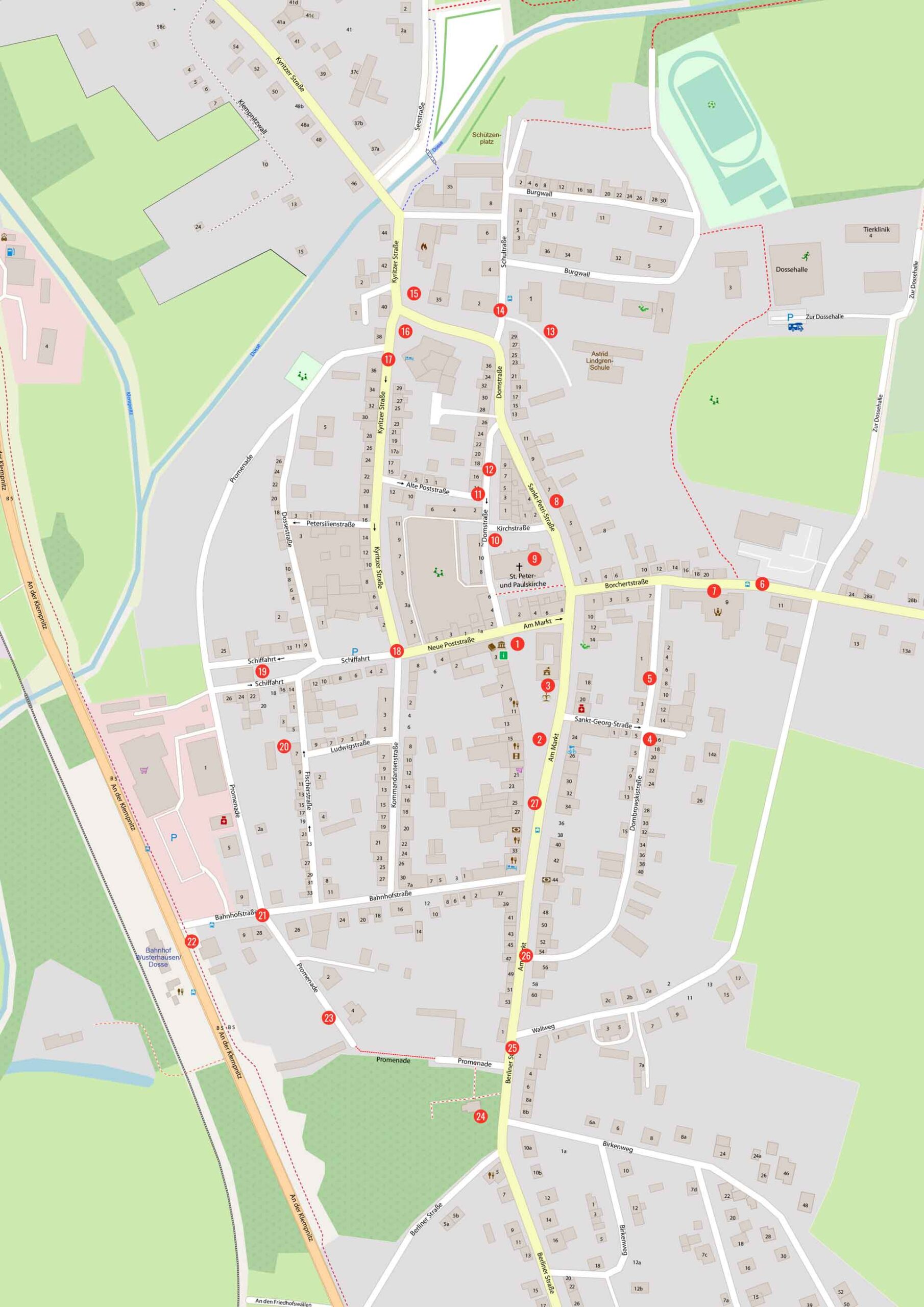Sword Grave No. 55 (Alte Poststrasse)
Similar to Kyritz lay in a particularly deep grave of the 11th/12th. Century an iron sword under a man's arm. He was so richly endowed for his journey into the afterlife that there are hardly any parallels known in north-western Slavic countries. These times are considered politically unstable due to the threat of military campaigns, weapons and pomp are therefore an expression of a self-assured claim to power.


View of the Alte Poststrasse

The replica of the sword in the permanent exhibition, photo: Barbara Wolff
gold on the sleeve
In addition to a sword with a silver hilt, grave 55 contained another extraordinary find: golden wire threads from three precious braids that once adorned the dead man's outer garment. Only the microscopic image in the laboratory showed that it was a matter of tiny strips of gold sheeting, which were wound spirally around a thread that has no longer been preserved – the so-called soul. Imprints also reveal the former technique: the gold wire was bent in an endless loop and embroidered onto the carrier material using silk thread.
The extraordinarily well-preserved borders give reason for speculation: At that time, only rulers such as the Emperor of the Holy Roman Empire of German Nations or the Basileus of Byzantium wore such precious robes on special occasions - coronation ceremonies, for example.
Did the dead measure himself against the greats of his time?
During pipe-laying work near the Wusterhausen St. Peter and Paul Church in 2006, an unusual grave find from the 11th/12th century to light. Only the left arm, which still rested on a 1.04 m long iron sword, was preserved from an already badly damaged burial from grave 55. This belongs to a widespread high medieval one-handed sword type. The length of the blade comes closest to the requirements of a weapon wielded by a mounted warrior. The crossguard and pommel are intricately inlaid with fine silver stripes, and the sword blade itself is still in a sheath made of wood and leather. This find, which is of national importance, was carefully recovered in one block, prepared and can now be seen in the Archaeological State Museum in the Paulikloster in Brandenburg.
With the friendly support of the BLDAM Wünsdorf, the true-to-original copy was made in 2011, which shows the gun as new.

City walk map general view
